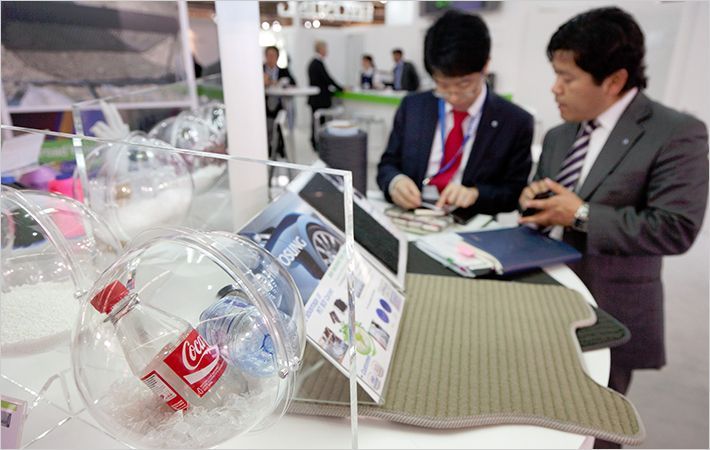Last year, KARL MAYER equipped its HKS 2-3 E machine to operate at a gauge of E 50 and by doing this created the perfect tool for producing the finest stretch warp knits in the world. E 50 gauge fabrics are incredibly soft and supple and have a silky shimmer – making a promise to the designers in search of completely new creations, which can only be kept as long as the entire production process is in perfect harmony.
The product developers at KARL MAYER expected a number of challenges, especially when it came to finishing these fine textiles. They asked themselves the question of how these fabrics with their smooth, uniform surface, high yarn and stitch density per square centimetre, and the resulting elastic recovery and elongation parameters would behave during finishing. Cooperating with Elastic & Weskott Textilveredlung GmbH gave them all the answers they needed.Last year, KARL MAYER equipped its HKS 2-3 E machine to operate at a gauge of E 50 and by doing this created the perfect tool for producing the finest stretch warp knits in the world. E 50 gauge #
This experienced, traditional company finished some raw fabric produced in the new E 50 gauge, and gathered some important information along the way.
In order to gain information on finishing these extremely fine fabrics, KARL MAYER had several charmeuse and double tricot fabrics in a gauge of E 50 finished by Elastic & Weskott Textilverdlung.
The textiles were heat-set on a stenter first and were then dyed in an HT beam dyeing machine. Finally, the batches were also dried in a stenter – a conventional processing sequence for stretch tricot fabrics and, contrary to expectations, the fine gauge put no restrictions whatsoever on the process. Problems with levelness can occur during beam dyeing when the fabric has a dense construction and a high beam density.
The dye liquor is usually pressed from the inside to the outside through the fabric layers, so that the beam must be penetrated uniformly in both the length and width. If the process is carried out at too high a pressure, the wound beam may become displaced or the surface may be damaged (moiré effects). On the other hand, if the pressure is too low, there is a danger that the dye liquor may not penetrate the fabric adequately and the batch will become patchy. None of these problems were encountered when dyeing the E 50 gauge fabric produced by KARL MAYER.
"Because we wanted to learn something from the dyeing experiments, we specifically chose dyes which would actually show up any faults in the fabric rather than hide them. As it was, we detected no defects whatsoever," explained the plant manager Volker Drexel. Future practical trials will show whether it will be possible to dye larger, production-size beam circumferences without any problems. Weights of about 150 kg in a gauge of E 40 are usual here.
Nor were there any of the worrying problems that can occur on the surface, such as moiré effects or stitch displacement, when finishing the fine fabrics.
The specifications worked out by Elastic & Weskott and KARL MAYER between them for processing the test batches related to dyeing uniformity as well as the fabric weight and the width of the final fabric. "The fabric was extremely dimensionally stable," confirmed Oliver Holleck from the Technical Service section. "During fabric inspection and subsequent testing of the final fabric, there was virtually no contraction." The finished textile had a good handle and no static charge at all.
However, in order to achieve the positive results during the finishing trials, the operatives had to handle the fabric extremely carefully, and the specific principles that already apply in the warp knitting sector had to be taken into account.
The warp knitting department must ensure that the fabric edges and beam build are of a high quality in order to guarantee good results in finishing. These requirements can be met optimally by using batcher no. 29.
The edges exhibit only a slight tendency to roll over, they can be pinned without any problems, and cause no distortion in the fabric at all.

